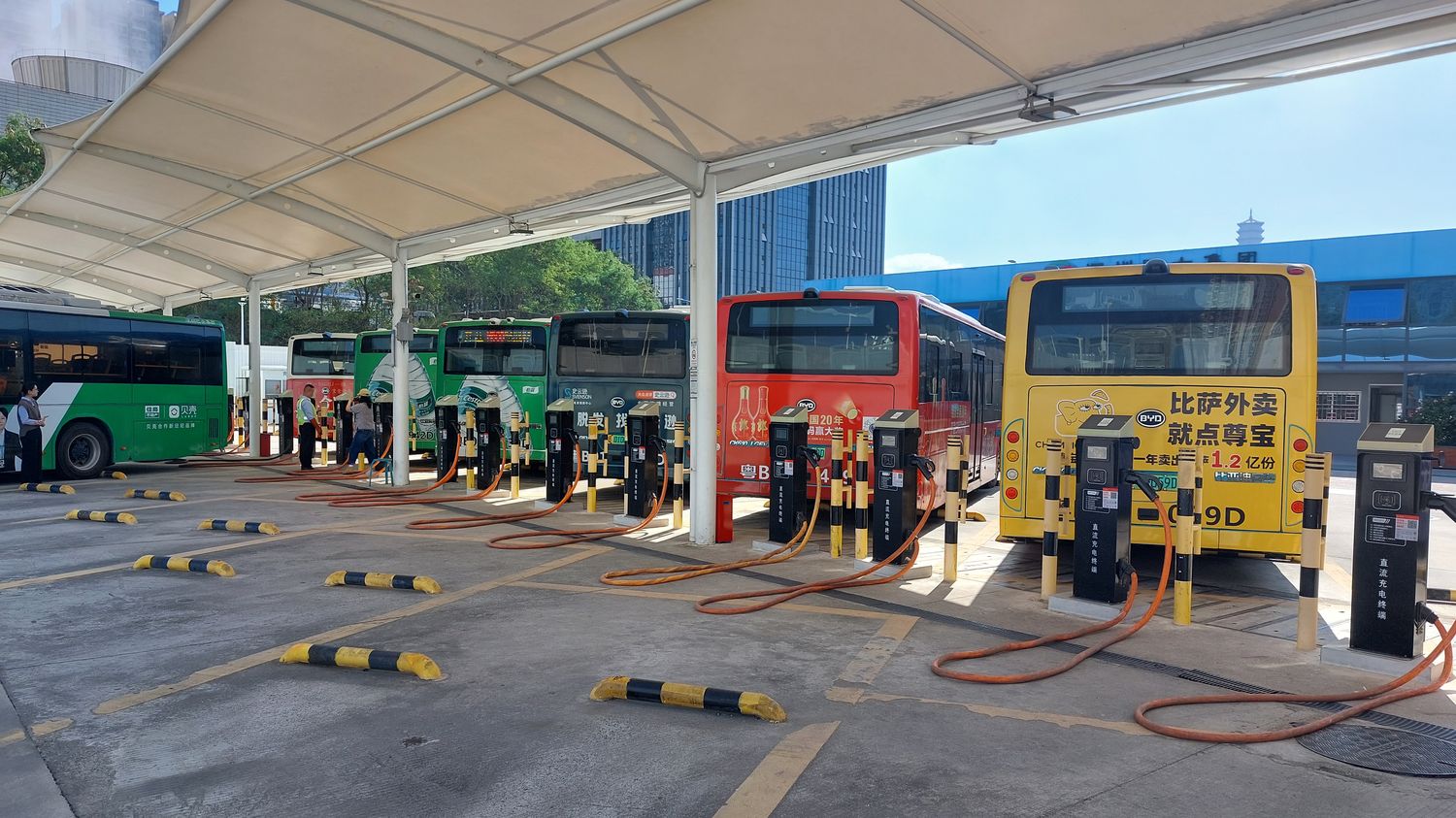On the occasion of COP28, we are interested in the great paradox of China, the number one polluting country on the planet, but also a true champion in the use of clean energy. Illustration in Shenzhen in the south of the country, the first large city in the world to go 100% electric for its taxis and city buses.
Published
Reading time: 4 min

Since Shenzhen chose 100% electric for its city buses in 2017, the Chinese capital of new technologies has inherited a new nickname: the city of silence. This is a bit of an exaggeration, but it is true that in the traffic jams in the heart of the city, the replacement of more than 15,000 diesel buses with purely electric vehicles has really reduced the noise level. We go to the heights of Shenzhen, to one of the 130 charging stations.
It’s Liu Yizeng, one of the maintenance technicians, who welcomes us: “This charging station can accommodate 85 buses that charge here every night. If buses run out of power during the day, they can come at any time even during peak fare hours, allowing them to run normally. The battery capacity is relatively large, after 90 minutes of charging, the bus can travel 170 kilometers, which is enough.” Not only have the city’s 15,000 buses gone all-electric, but also more recently nearly 21,000 taxis, or the entire fleet. Indeed, when we look at the number plates of buses and taxis in Shenzhen, we see that they are all green. This is how we recognize vehicles that run on electricity in China.

According to a World Bank study carried out specifically for Shenzhen, this transition caused CO2 emissions to drop by 52% for each bus – this figure takes into account the manufacturing of the vehicle and its battery. This is also what Jian Peng, who is in charge of bus operation in one of the city’s three public transport companies, Shenzhen Bus, explains to us: “Since the complete electrification of our city buses, we save around 160 million liters of fuel per year. And this reduces CO2 emissions by 440,000 tonnes, the equivalent of 160,000 tonnes of standard coal. On the scale of our city, this is a huge contribution to the environment. On noise pollution, the noise level of traditional diesel buses could reach around 90 decibels, while that of electric buses is less than 50 decibels. “
“The air is better throughout the city”
When we get off the bus, the passengers we meet confirm that pollution in Shenzhen has become less visible, like this 78-year-old retiree: “This is a good thing for environmental protection. The air is better throughout the city, and now there is rarely much pollution in Shenzhen. Our country has committed to the international community to reduce its carbon emissions and achieve carbon neutrality. If we have to pay for this, we, the taxpayers, are prepared to accept it voluntarily.” Shenzhen is presented as a model that China has already begun to replicate in other cities. Beijing and Shanghai, for example, are also approaching 100% electric public transport.
On the industrial level, China has every capacity to cope. The country already has a dozen electric bus manufacturers. Factories are running at full capacity. But the cost is very high for municipalities. To change the buses and install dozens of charging stations, Shenzhen spent more than three and a half billion euros. The capital of new technologies, a rather rich city, has the means to pay but this is far from being the case everywhere.
A high cost for municipalities
Since zero covid, many communities have been in debt and the switch to electric sometimes goes wrong, as transport specialist Li Yanwei explains: “The batteries of electric buses have a limited lifespan of around five years or even less. The consequence is that the cost of electric buses remains very high, and if public financial support is not sustainable, this can be a potential problem. For example, the city of Baoding – in the north – had more than a hundred purely electric buses. After five years of operation, the batteries reached their lifespan. As the municipality had financial difficulties , there was no more money to renew these buses. The city had to put traditional diesel buses back into service.
The transition to electric buses is a very good point for China’s carbon footprint, even if it is important to point out that these buses continue to pollute indirectly. In Shenzhen, half of the electricity that fuels buses still comes from coal. This remains a major challenge for China which, despite all its efforts in terms of clean energy, still ultimately remains a bad student in the fight against climate change, because of this massive use of coal to produce its electricity.
